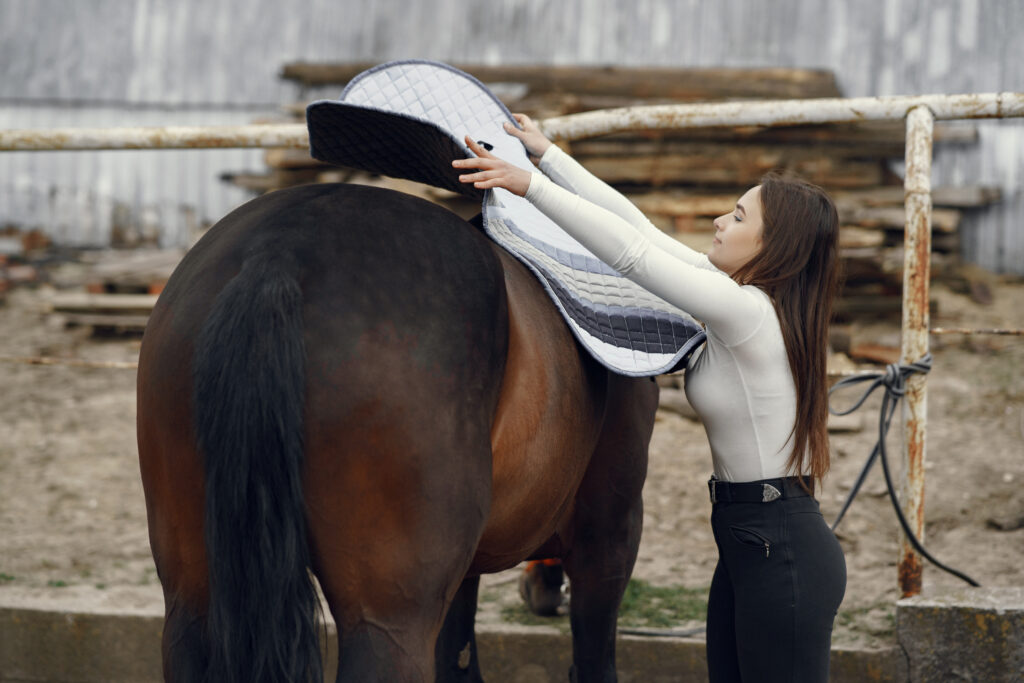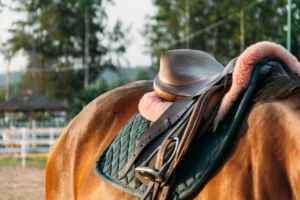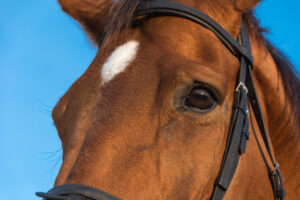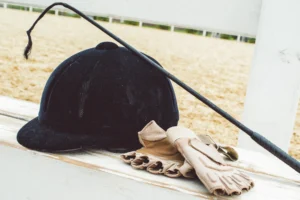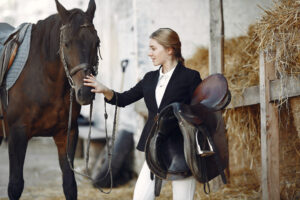Introduction
As a horse owner, few diagnoses strike fear quite like navicular disease in horses. This chronic, progressive condition affects the navicular bone and surrounding structures in your horse’s foot, often leading to persistent lameness that can end athletic careers and dramatically impact quality of life. While the term “navicular disease” has evolved over the years (with many veterinarians now preferring “navicular syndrome” to reflect its complex nature), the reality remains the same: early detection is absolutely critical.
Navicular disease in horses often develops gradually, with subtle signs that many owners unfortunately miss until the condition has significantly progressed. This oversight can mean the difference between effective management and permanent lameness. That’s why understanding the warning signs of navicular syndrome in horses isn’t just helpful—it’s essential for responsible horse ownership.
In this comprehensive guide, we’ll explore the four most alarming signs of navicular disease in horses that demand immediate attention, along with crucial information about diagnosis, treatment options, and management strategies to help your equine companion live comfortably despite this challenging condition.
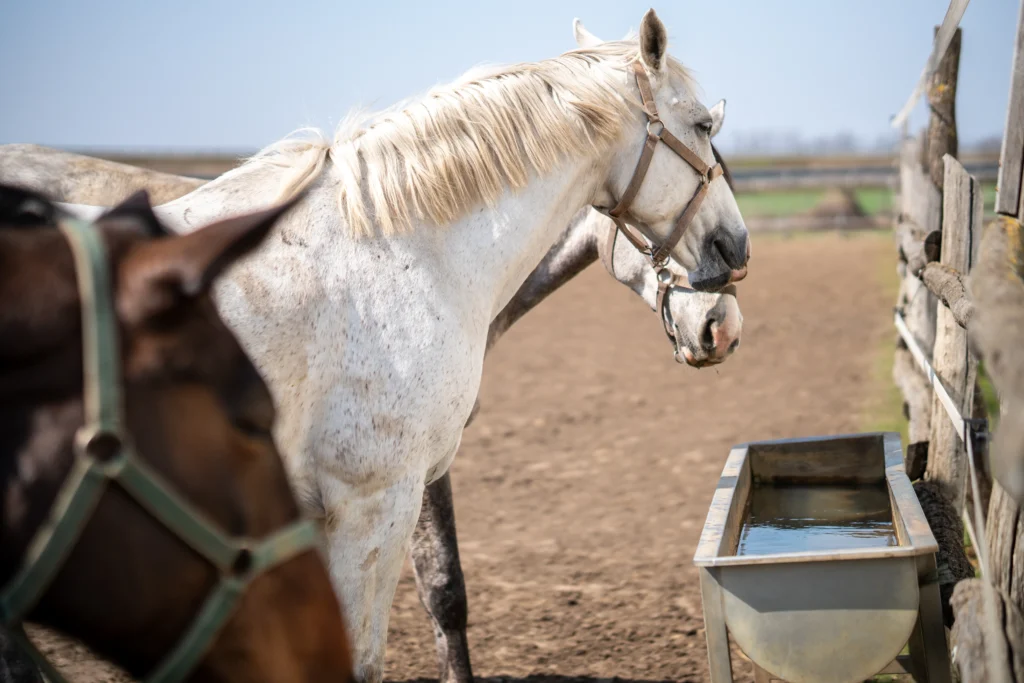
Understanding Navicular Disease: A Brief Overview
Before diving into the warning signs, let’s establish a clear understanding of what navicular disease in horses actually involves.
What Exactly Is Navicular Disease?
Navicular disease in horses refers to a degenerative condition affecting the navicular bone—a small boat-shaped bone that sits behind the coffin bone within the hoof—and its associated structures, including the deep digital flexor tendon, navicular bursa, and supporting ligaments. Rather than being a single disease, veterinarians now recognize it as a syndrome with multiple contributing factors, hence the term “navicular syndrome in horses.”
The navicular bone serves as a crucial fulcrum for the deep digital flexor tendon, which runs down the back of the leg and attaches to the coffin bone. When the horse bears weight, this tendon exerts pressure on the navicular bone. Over time, especially in horses with certain conformational predispositions, this pressure can lead to degenerative changes in the bone and surrounding tissues.
Common Causes of Navicular Disease in Horses
Understanding the causes of navicular disease in horses helps explain why some animals are more susceptible than others:
- Conformation Issues: Horses with poor foot conformation—particularly those with small, narrow, or upright hooves—face increased risk.
- Genetic Predisposition: Certain breeds, including Quarter Horses, Thoroughbreds, and Warmbloods, show higher incidence rates of navicular disease in horses.
- Biomechanical Stress: Repetitive concussion from work on hard surfaces can accelerate degenerative changes in the navicular area.
- Poor Trimming and Shoeing: Improper hoof care that doesn’t support proper foot balance increases pressure on the navicular apparatus.
- Limited Blood Supply: The navicular bone has a relatively limited blood supply, which can impair healing once damage occurs.
Now that we understand the condition better, let’s focus on those critical warning signs that no horse owner should ever ignore.
The 4 Shocking Signs of Navicular Disease in Horses
When it comes to navicular disease in horses, certain symptoms stand out as particularly concerning. These aren’t merely inconvenient behaviors—they’re urgent signals that your horse needs veterinary attention. Here are the four most alarming signs of navicular disease in horses you simply cannot afford to miss:
1. Characteristic “Navicular Stance” and Gait Changes
One of the earliest and most telling symptoms of navicular in horses involves changes in how your horse stands and moves. Horses suffering from navicular pain typically adopt a distinctive posture aimed at relieving pressure on the painful structures in the foot.
What to Watch For:
- Pointing: Your horse may consistently “point” one or both front feet forward while resting, extending the leg slightly ahead of the body to reduce weight-bearing on the heel area.
- Short, Choppy Strides: As navicular disease in horses progresses, you’ll notice a shortened stride length, particularly in the front limbs. This “pottery” gait occurs as your horse attempts to minimize concussion on the painful navicular area.
- Landing Toe-First: Healthy horses typically land heel-first when moving. Horses with navicular syndrome in horses often shift to landing toe-first to avoid putting pressure on the painful heel area.
- Bilateral Lameness: Unlike many lameness issues that affect a single leg, navicular disease in horses commonly affects both front feet simultaneously (though sometimes one is worse than the other). This bilateral nature can sometimes make the lameness less obvious but more insidious.
Jessica, a dressage rider from Colorado, shares: “I first noticed something was wrong when my gelding’s beautiful extended trot became increasingly short and flat. He wasn’t obviously lame, but he’d lost all that suspension and push from behind. By the time we got the diagnosis of navicular disease, the changes had been happening for months. I wish I’d recognized the significance of those gait changes sooner.”
2. Pain Response to Hoof Testing and Manipulation
Specific pain reactions during hoof examination represent another crucial indicator of navicular disease in horses. These responses can help distinguish navicular syndrome from other causes of front-end lameness.
What to Watch For:
- Heel Pain: Horses with navicular issues typically show pain when pressure is applied to the central area of the heel (over the navicular bone). Your farrier or veterinarian may perform this test using hoof testers.
- Frog Sensitivity: Increased sensitivity when pressure is applied to the central area of the frog often indicates navicular syndrome in horses.
- Pain on Flexion Tests: When a veterinarian performs a lower limb flexion test (holding the fetlock in a flexed position for a minute before trotting the horse), horses with navicular issues often show increased lameness immediately after.
- Worsening on Hard Surfaces: A classic sign of navicular disease in horses is lameness that worsens when the horse is worked on hard, unforgiving surfaces and improves somewhat on soft ground.
Mark, a trail rider from Texas, recalls: “My Quarter Horse would flinch and try to pull his foot away whenever my farrier applied pressure to his heels. I thought he was just being difficult until my vet explained this was actually a major red flag for navicular disease. That pain response was trying to tell us something important, and I’m glad we finally listened.”
3. Dramatic Performance Decline and Behavior Changes
When a horse begins experiencing the chronic pain associated with navicular disease in horses, changes in performance and behavior inevitably follow. These changes often develop gradually, making them easy to misinterpret or attribute to training issues rather than physical pain.
What to Watch For:
- Resistance to Collection: Horses with navicular syndrome in horses often resist coming onto the bit or collecting, as these movements increase weight-bearing on the front end.
- Difficulty with Turns: You may notice your horse becoming increasingly reluctant to perform tight turns or circles, especially at faster gaits.
- Unwillingness to Go Downhill: Traveling downhill increases pressure on the front feet, making horses with navicular pain particularly resistant to downhill work.
- New Behavioral Issues: Previously cooperative horses may suddenly develop “attitude problems”—refusing jumps, bucking during transitions, or becoming irritable during grooming or tacking up. These behaviors are often pain responses rather than training issues.
- Shifting Lameness: Some horses with navicular disease in horses may appear to have shifting or intermittent lameness that improves with rest but quickly returns with work.
Sarah, an eventer from Virginia, shares: “My mare went from being a willing, talented jumper to refusing even simple crossrails within a few months. I wasted time working with trainers on what I thought was a behavioral issue before finally getting a veterinary workup that revealed significant navicular changes. Her ‘bad attitude’ was simply her way of communicating that she was in pain.”
4. Progressive Heat and Changes in Hoof Appearance
Physical changes in the hooves themselves often accompany navicular disease in horses, though these can be subtle enough that only an experienced eye might catch them initially.
What to Watch For:
- Chronic Heat in the Foot: Persistent warmth in one or both front feet, particularly around the heel area, can indicate the inflammation associated with navicular syndrome.
- Contracted Heels: As horses modify their stance and movement to avoid pain, their hoof structure begins to change. Narrow, contracted heels are commonly seen in horses with established navicular disease in horses.
- Decreased Sole Concavity: The sole may become flatter in horses with chronic navicular problems.
- Uneven Hoof Wear: Abnormal wearing patterns, particularly excessive toe wear with minimal heel wear, often indicate navicular syndrome in horses.
- Reduced Hoof Growth: In some cases, pain and altered blood flow can lead to slower hoof growth on the affected feet.
Tom, a farrier with 25 years of experience, notes: “I often see navicular disease before owners even recognize there’s a problem. The heels start to contract, the frog atrophies, and the toe starts showing excessive wear as the horse changes how it moves. When I point out these changes, many owners suddenly realize their horse has been standing differently or moving oddly for weeks or even months.”
Diagnosing Navicular Disease in Horses
When these warning signs appear, proper diagnosis becomes essential. Diagnosing navicular in horses typically involves a multi-step approach:
Veterinary Examination
The first step in diagnosing navicular in horses involves a thorough veterinary examination including:
- Observational Assessment: Your veterinarian will watch your horse move at different gaits on various surfaces.
- Flexion Tests: These help identify which structures are painful.
- Hoof Testers: Applied pressure helps pinpoint areas of discomfort.
- Nerve Blocks: By temporarily numbing specific nerves in the foot, veterinarians can confirm whether the pain originates in the navicular region.
Advanced Imaging
Modern diagnosing navicular in horses often relies on several imaging techniques:
- X-rays (Radiographs): Navicular x-rays in horses remain the traditional starting point for diagnosis, revealing changes in bone structure such as:
- Enlarged synovial channels (sometimes called “lollipops”)
- Cyst-like lesions
- Changes in bone density
- Bone spurs or fragments
- Ultrasound: Helps evaluate soft tissue structures around the navicular bone that don’t appear on x-rays.
- MRI: Considered the gold standard for diagnosing navicular in horses, magnetic resonance imaging provides detailed information about both bone and soft tissue abnormalities. MRI has revolutionized our understanding of navicular syndrome by revealing that many cases involve soft tissue damage rather than just bone pathology.
Dr. Emily Carter, an equine veterinarian specializing in lameness, explains: “We now know that what we call ‘navicular syndrome’ actually encompasses a spectrum of different pathologies—from bone changes to damage in the supporting ligaments, bursa inflammation, or deep digital flexor tendon lesions. That’s why advanced imaging, particularly MRI, has become so valuable for developing targeted treatment plans.”
Treatment Options for Navicular Disease in Horses
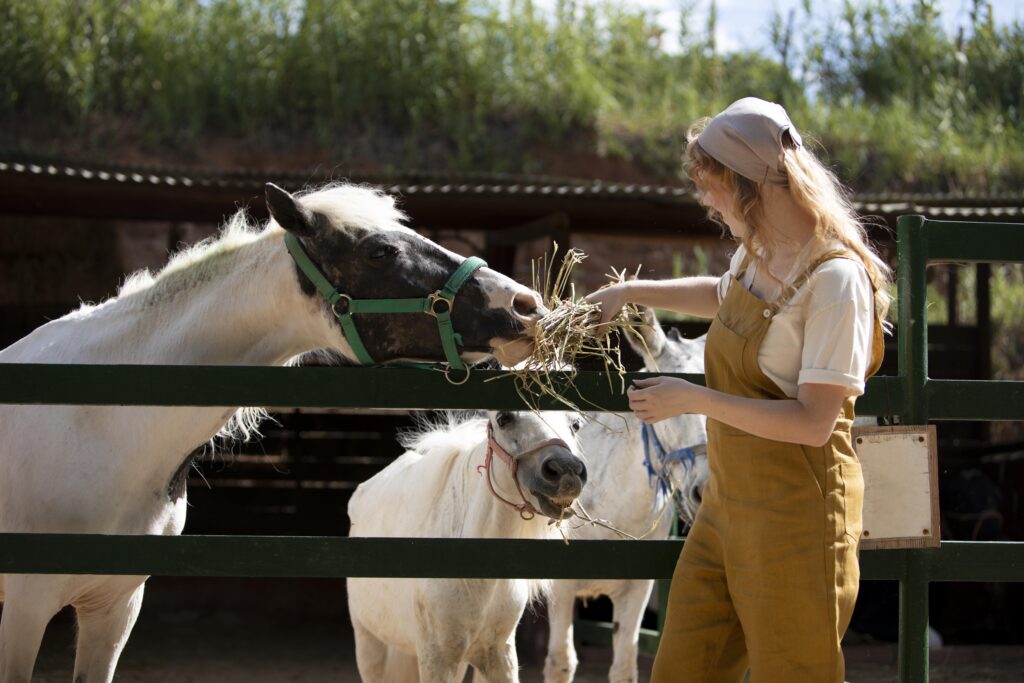
While there’s no cure for navicular disease in horses, numerous navicular horse treatment options can manage pain and slow progression:
Medical Management
- Anti-inflammatory Medications: Nonsteroidal anti-inflammatory drugs (NSAIDs) like phenylbutazone (“bute”) or firocoxib can help reduce pain and inflammation.
- Bisphosphonates: Medications like Tildren® and OsPhos® can help slow bone resorption and are approved for treatment for navicular disease in horses.
- Corticosteroid Injections: Direct injection into the navicular bursa can provide temporary relief for some horses.
- Neurectomy: In advanced cases where other navicular horse treatment options have failed, surgical cutting of the nerves supplying sensation to the back portion of the foot (palmar digital neurectomy) may be considered as a last resort.
Therapeutic Shoeing
Appropriate shoeing is crucial for managing navicular in horses. The best shoes for navicular horses often feature:
- Rolled toes to ease breakover
- Wide, supported heels
- Egg bar or heart bar designs
- Wedge pads to reduce deep digital flexor tendon tension
- Shock-absorbing materials
James Miller, a farrier specializing in therapeutic shoeing, notes: “Finding the best shoes for navicular horses is highly individual. What works brilliantly for one horse may not help another at all. It’s about creating a partnership between the veterinarian, farrier, and owner to try different approaches and closely monitor the horse’s response.”
Complementary Therapies
Several complementary approaches may support traditional treatment for navicular disease in horses:
- Shockwave Therapy: May stimulate healing and provide pain relief
- Acupuncture: Can help manage pain and improve overall comfort
- Regenerative Therapies: Including platelet-rich plasma (PRP) or stem cell treatments
- Natural Remedies for Navicular Disease in Horses: Some owners report benefits from supplements containing MSM, glucosamine, or herbs like devil’s claw
Managing Navicular Disease Long-Term
Managing navicular in horses requires a comprehensive approach focused on both comfort and functionality:
Exercise Considerations
Proper exercise plays a vital role in managing navicular in horses:
- Consistent, Appropriate Movement: Complete rest is rarely beneficial; controlled exercise helps maintain joint health and circulation.
- Footing Matters: Soft, even footing reduces concussion on the navicular apparatus.
- Warm-Up Time: Horses with navicular syndrome often need longer warm-up periods before performing at their best.
- Modified Expectations: Adjusting competitive goals may be necessary depending on severity.
Lifestyle Management
Navicular horse care extends beyond medical treatments to include:
- Weight Management: Excess weight increases stress on the feet.
- Turnout Options: 24/7 turnout on soft ground is ideal for many affected horses.
- Regular Farrier Care: Maintaining proper hoof balance with 4-6 week shoeing cycles.
- Comfortable Housing: Well-bedded stalls if stall rest is necessary.
Monitoring and Adaptation
Successful managing navicular in horses requires vigilant monitoring:
- Regular Veterinary Evaluation: Follow-up examinations help track disease progression.
- Farrier Communication: Ensure your farrier is informed about the diagnosis and treatment plan.
- Pain Assessment: Learn to recognize subtle signs that your horse’s comfort level may be changing.
Prognosis and Future Outlook
The navicular disease prognosis in horses varies widely depending on:
- Severity of changes when diagnosed
- Age at onset
- Conformational factors
- Response to treatment
- Intended use of the horse
Many horse owners wonder, “Is navicular disease in horses curable?” While there’s no true cure, the condition can often be successfully managed. Some horses return to full athletic function, while others may need career adjustments but can remain comfortable with appropriate care.
Dr. Williams, an equine sports medicine specialist, shares: “The navicular disease prognosis in horses has improved dramatically over the past decade. With earlier detection using advanced imaging, targeted medical therapies, and improved understanding of biomechanics, many horses with navicular syndrome can continue comfortable, productive lives. It’s no longer the career-ending diagnosis it once was.”
Prevention: Reducing Risk Factors
While not all cases of navicular disease in horses can be prevented, several strategies may reduce risk:
Conformation Awareness
When purchasing horses, be aware of conformational traits that predispose to navicular problems:
- Long toe/low heel conformation
- Small feet relative to body size
- Straight shoulders or pasterns
Proactive Hoof Care
Preventing navicular in horses starts with excellent hoof care:
- Regular, skilled farrier work maintaining proper balance
- Appropriate shoeing for the horse’s conformation and use
- Early intervention when imbalances appear
Training Considerations
Training practices can influence navicular health:
- Gradual conditioning programs
- Working on varied, appropriate surfaces
- Adequate warm-up and cool-down periods
- Proper balance between work and rest
Early Signs: What Not to Miss
The early signs of navicular in horses are subtle but critical to recognize:
- Mild, intermittent lameness that comes and goes
- Brief “pottery” steps when first starting work
- Occasional toe-first landing
- Subtle resistance to collection or lateral work
- Preference for one lead over another
- Decreased stride length or animation
Catching these early signs of navicular in horses before significant damage occurs offers the best chance for successful management.
Natural Approaches to Supporting Navicular Horses
For owners interested in complementary care, several natural remedies for navicular disease in horses may support conventional treatment:
- Proper Nutrition: Balanced minerals are essential for hoof health.
- Omega-3 Supplementation: May help reduce inflammation.
- Herbal Anti-inflammatories: Herbs like turmeric, boswellia, and devil’s claw may offer some anti-inflammatory benefits.
- Bodywork: Therapies like massage and chiropractic can address compensatory issues in other parts of the body.
Lauren, whose dressage horse was diagnosed with navicular syndrome at age 12, shares: “We use a multi-faceted approach that includes traditional veterinary care and some natural remedies for navicular disease in horses. The combination of proper shoeing, controlled exercise, anti-inflammatory herbs, and regular bodywork has kept my horse comfortable and competing at Third Level dressage for three years since his diagnosis.”
When to Seek Emergency Care
While navicular disease in horses typically develops gradually, certain situations warrant immediate veterinary attention:
- Sudden, severe lameness
- Refusal to bear weight on a foot
- Signs of significant pain despite medication
- Development of unusual heat or digital pulse
- Any dramatic change in symptoms
Conclusion: Taking Action Against Navicular Disease
Navicular disease in horses presents a significant but manageable challenge for horse owners. By understanding and recognizing the four critical warning signs—characteristic stance and gait changes, specific pain responses, performance and behavioral changes, and physical hoof alterations—you can take prompt action that may significantly improve your horse’s prognosis.
Remember that successful managing navicular in horses requires a team approach involving you, your veterinarian, your farrier, and potentially other equine professionals. With proper diagnosis, tailored treatment, and consistent care, many horses with navicular syndrome can continue comfortable, productive lives.
If you suspect your horse may be showing signs of navicular disease in horses, don’t delay seeking professional evaluation. Early intervention offers the best opportunity for effective management and preserving your horse’s comfort and athletic ability for years to come.
Resources for Horse Owners
For more information about equine health and care, explore these valuable articles on our site:
- Understanding Common Hoof Problems in Horses
- The Complete Guide to Equine Lameness
- Natural Supplements for Joint Health in Horses
- When to Call the Vet: Emergency Signs in Horses
External Resources
For additional trusted information about navicular disease in horses, consult these reputable sources:


